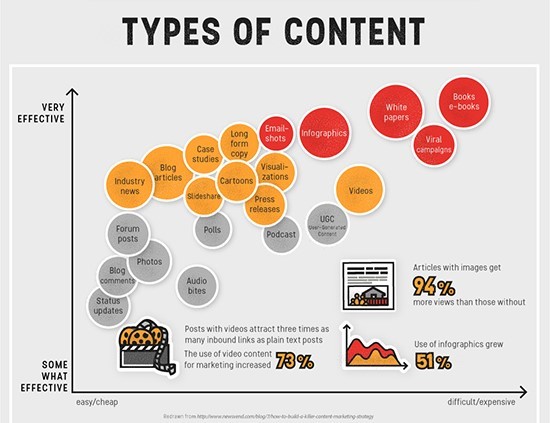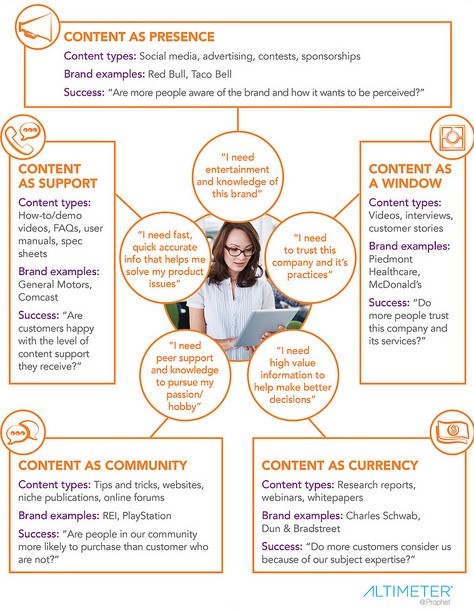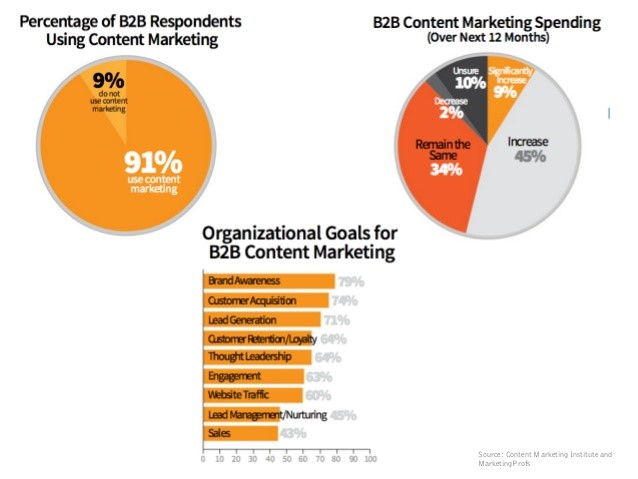Thought Leadership: How To Do It
You’ve made a decision to take your business game to the next level. You know a thought leadership campaign will get you there. So, how do you do it?
How to Develop a Thought Leadership Campaign
If it’s a sales pitch, it’s not thought leadership.
“True thought leadership starts with empathy,” said Brian Solis, a principal analyst at Altimeter Group and author of What’s the Future of Business (WTF). “Can you tell me the top ten problems your audience has at any given time? How about the top ten aspirations? Are you thinking through where your audience wants to be, compared with where the market is going? That’s what inspires me. Someone who is honestly trying to better understand the people they are trying to help.”
To establish an effective thought leadership campaign, follow these five simple steps:
- Know your audience—as it relates to your business and beyond, what’s on their minds?
- Consult the experts—ask the most knowledgeable people on your team for their advice. Keep asking.
- Structure a thought leadership content strategy map—what are your goals? What expectations are realistic? What topics should you cover that matter to your audience and fall within your team’s expertise?
- Write it. Publish it.
- Continue the conversation—how did your audience react? If they didn’t react, where did the distribution fall apart? Tracking emails, downloads, retweets, likes, etc. can help you learn more about your audience’s thoughts and needs.

Writing and publishing may be the shortest item in that list, but will require an ongoing commitment. Maintaining a blog can be an extremely effective way to get your whitepapers and infographics to your audience.

How to Write a Thought Leadership Article (Whitepaper, Blog…)
An effective thought leadership article needs to have perspective, content, and a path forward. Remember, if it’s a sales pitch, it’s not thought leadership. But if your content fails to connect your company with value to your audience, you’ve missed the mark.
Perspective means having a deep, well-researched understanding of your target audience and customer base. Who are you trying to reach? What do you know about them?
The content is the article itself. It should showcase your company’s understanding of its customers, show how products and services benefit those customers, and build relationships with them for the long term.
A path forward is an action point for the reader to seek solutions to business problems through your company.
A 2014 study showed 85 percent of B2B (business-to-business) marketing leaders did not connect their content to business value (2014 Forrester Research/Business Marketing Association/Online Marketing Institute study). The study found that while nearly 75 percent self-reported using customer stories and case studies in their content, only three percent said it was a primary focus. Just 12 percent said publishing research and expert perspectives was the main focus of their content marketing. And only five percent said frequent communication with their customer base was a priority.
These marketing leaders were missing huge opportunities to utilize their case studies, a type of content both highly effective and easy to produce—or even already produced! With attention and focus, a minimal amount of effort disseminating the case studies could have reaped huge rewards in achieving thought leadership goals.
”
Ready to write? Let’s get started.
Good research, excellent writing, and unforgettable style are all components of an effective thought leadership article.
Start your research by gathering available information. Does your company already have research or experts on your subject? Past brochures or interviews? Take it a step further: Could you interview sources at a business closely tied with yours, or satisfied customers who can speak to realistic results of working with your company? And please remember that while, yes, everyone loves Wikipedia, no, you may not use it as a source.
When it comes to the actual writing, there are plenty of sources available to help improve your craft. If you love your subject, all you may need is a helpful editor to lend a second pair of eyes and clear up any rough spots. Not up to the task of the actual writing? You can always outsource it. But if you’re comfortable with grammar basics and able to fluently translate your industry’s jargon, great! Get writing!
Now the big question: What type of content do you write? As you start brainstorming articles, papers, or posts that will matter to your audience, think about what type of content will further your business goals.
- Is your goal branding? Your content style is presence.
- Is your goal trust and transparency? Your content style is window.
- Are you marketing your expertise? Your content style is currency.
- Are you interested in joining together like-minded people? Your content style is community.
- Are you providing customer service? Your content style is support.

Now, think about the style and tone of your piece. What publications do you admire and want to emulate? Is the writing formal or conversational? Crisp or punchy?
And always include a simple infographic, video, even a photo—anything to engage with your audience at a visual level and increase shares on social media. A meaty, fact-filled whitepaper is great… unless it puts your audience to sleep. Consider resurrecting dense prose into logical infographics when appropriate. Make it simple, and make it memorable. If you can deliver information more simply in a crisp diagram, you probably should.

Stand Out from the Crowd
With many companies vying for position as thought leaders, keeping an eye on the competition can mean the difference between emerging victorious… or irrelevant.
First, identify a handful of competitors in your specialization, companies or people trying to reach your same audience. What are the most effective thought leaders doing differently from the rest of the competition? Analyze their audience’s responses. What are they doing well? What could they do better? Learn from them.
Scoping out competitors can help you structure your own thinking and goals. Take what you learned from the above exercise and put it to work:
- The Step Strategy—Model your work off the competition, but do it a little better.
- The Superiority Strategy—Boldly challenge competitors by branding your business solutions far superior within the same field.
- The Innovative Strategy—This strategy side-steps conflict with innovative intellectual capital.
Social Media: Do I Have to?
You really do. And why wouldn’t you? The only cost associated with social media is the time and staff to stay engaged. That can lead to a huge return on investment (ROI). Follow these five pointers to promote your thought leadership through social media.

- Target your audience—knowing your audience is crucial in every aspect of thought leadership and business, especially social media.
- Provide solutions—social media users are seeking answers to their problems. Use your thought leadership to provide what they need.
- Convert visitors to customers—this is that critical link between presenting information to your target audience, and providing your readers with an action point. They’ve come to you for a solution, so here’s an opportunity for you to provide what they need through your business: a discount or free product, a special offer for social media users; something to inspire them to hitch their wagon to yours.
- Transparency—this is key for building trust. You want your readers to see your genuine concern. Dealing with people honestly and with integrity, in social media’s ever-public setting, can showcase trustworthiness.
- Responsiveness—your customers, whether individuals or other businesses, need to feel heard. Knowing their concerns matter to you leads to their loyalty to your brand. This is another area where social media’s real-time involvement can make or break your long-term customer relationships.
Starting a social media campaign—much less a thought leadership initiative—may seem overwhelming to the uninitiated. But the proven return on investments from social media can’t be ignored. Scary or not, social media should be an integral part of every thought leadership campaign.
Up Next: Selling Thought Leadership to Your Team, featuring an exclusive interview with Brian Solis, Principal Analyst with Altimeter, a Prophet company.










